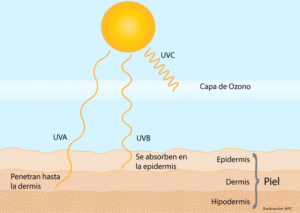
The Science behind Sunscreens
Creating a sunscreen formula is not an easy task when you consider the importance of this cosmetic product and its impact on the health of consumers.
The use of sunscreen is recommended whenever we are exposed to the sunlight, and it is also one of the measures we can take to prevent skin cancer.
For this type of product, the formulation must contain ingredients that comply with the current regulations of the country where it will be marketed, and the requirements vary greatly in each region.
Even so, there are some basic concepts that we must follow to obtain a quality sunscreen, regardless of specific local regulatory requirements.
Factors to consider when creating a quality sunscreen formula:
UV radiation
First, you need to understand what ultraviolet radiation (UV rays) is and why protecting against UVA and UVB rays is so important.
Ultraviolet radiation is a form of non-ionizing electromagnetic radiation that covers the wavelength range of 200 to 400nm. It is divided into three types:
UVA: mainly causes photoaging, which is premature aging of the skin. It is about 95% of the UV rays that reach the Earth’s surface. They have low intensity, but penetrate deeper into the skin.
UVB: these correspond to approximately 0.25% of all solar radiation, but are mostly blocked by the ozone layer and clouds.
UVC: in theory, it is the most dangerous radiation for humans; however, UVC rays are blocked almost completely by the ozone layer.

- Broad spectrum protection
In the above image we see how broad spectrum protection (for UVA and UVB rays) is essential in a sunscreen.
To obtain this type of protection, we can combine physical or inorganic filters and chemical or organic filters, which have different mechanisms of action to protect against radiation and act as a barrier for different waves. Also, you should take a look at the proper solubilization of each of the filters that make up the formula to avoid compatibility issues between them.
- Sensitive
We must also ensure that the sunscreen has a pleasant touch to the skin with a sensitive base that can be applied easily, be it a cream, lotion, gel, spray, biphasic, oil or roll-on stick. Being able to apply the product well on the skin can guarantee a more uniform film-like cover that will help the protective layer fulfill its role.
- Other features
There are other features that can be delivered by adding specific ingredients, such as:
- Water resistance by using waxes and resins.
- Protection against blue light, which is possible by adding natural active agents.
- Dry touch, by obtaining a good balance between the filters and the use of the right emollients and
- Tinted sunscreen, by adding pigments to the formula.
- Antioxidants, anti-aging, anti-stain, among others.
Today, using a sunscreen is no longer something exclusive to beach vacations. Consumers are much more aware of the importance of its daily use and benefits, so now they always look for a quality product.















